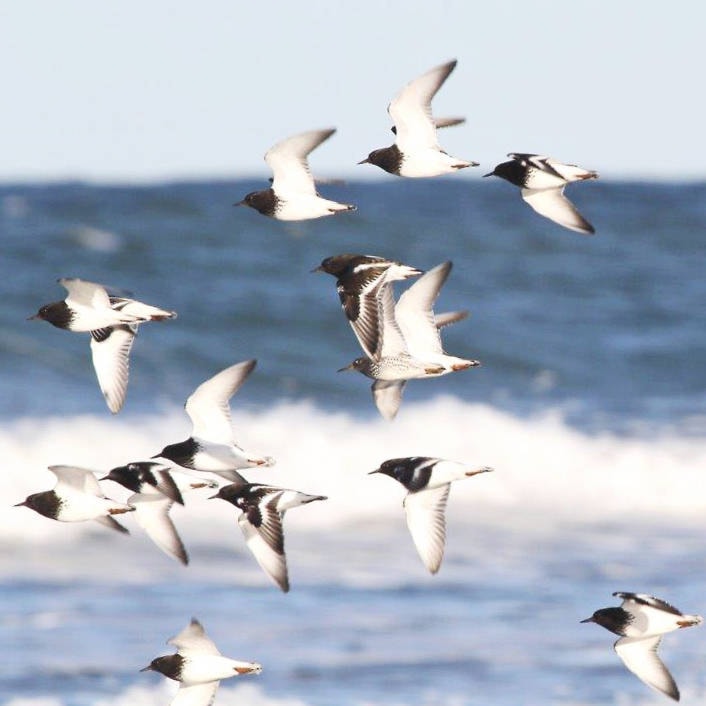By Margo Hearne
A stiff northwesterly keeps the birds in shelter. Tiny sanderlings hunker behind the rocks at Skonun Point waiting for the tide to fall, mew and glaucous-winged gulls ride the airways and turnstones chatter among themselves.
Turnstones, those small black-and-white shorebirds, can be a noisy bunch. When they haul up under the wharf at Sandspit everyone knows they’re there. Their sharp calls echo underneath the decking and there’s a constant disturbance as new birds fly in and displace the ones already there. Harlequin ducks haul out there as well, and then the turnstones fly out in a tight circle to land somewhere else.
It’s a great haul-out actually; the wharf’s crossbeams have lots of space for birds and, because it’s covered, they are relatively safe from hawks. Most hawks. A merlin can, and does occasionally, swoop swiftly in to take one of the displaced birds that had to move when someone else came along. It’s a life-or-death struggle, this business of survival. We don’t know the half of it.
Perhaps we can identify bird species, or have some idea of what and how they eat, but when it comes right down to it, we haven’t a clue. Even though they were there long before we were, we don’t give a toss if we want to be where they are. We tear up the beach and drive through a flock of shorebirds and gulls and ignore the fact they need a place to rest, roost and feed. We let our dogs race along the feeding grounds and let our cats roam at will. Our sense of entitlement is shocking, and the sad thing is, if any creature, in any way, fights back, we kill them. Bears, tigers, wolves, lions all become ours for the slaughter. Even the protective goshawk, who will fly at us if we get too near a nest, is immediately seen as a danger. The reality is, we are a danger to any kind of wild thing, be it creature, forest, or bush.
So today, offshore, birds feed and dive. The tides are running in and out at the same time (they do that in Masset Inlet, it can be unsettling) and Pacific loons are moving inland with the tide. All those rich nutrients from the lowland rivers and streams drain into the inlet and provide rich pickings for the birds. It’s where they belong.
The people who have lived here since time immemorial can tell us their story of what always was and what has changed, yet each generation thinks they are making new discoveries. In fact, someone has seen it before, knows about it and might be willing to share. The important thing is to respect that knowledge, listen to it and learn from it. We would know nothing if we didn’t listen to the local people. We experience the joy of living here and hearing people’s stories. Just this week we learned that there was a Wilson’s warbler in a friend’s garden this summer and the magpie is still here. And so are the rackety Steller’s jays.
